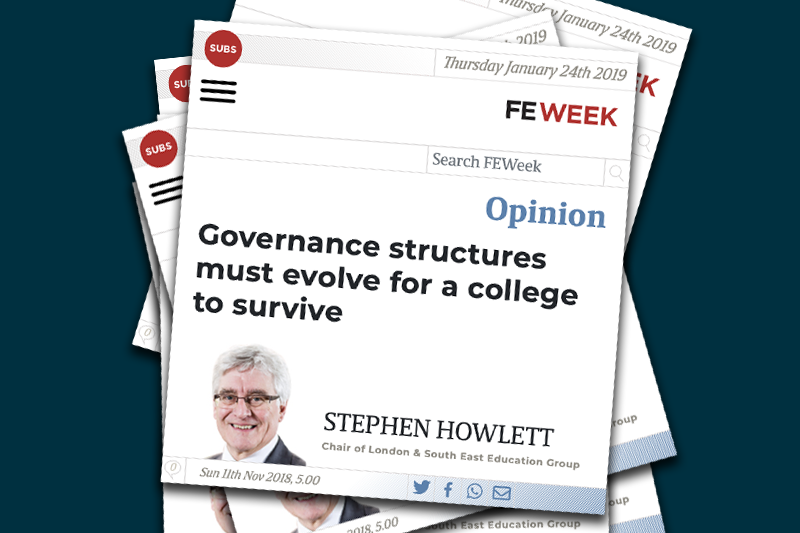Good governance is essential to the effective running of any business, with an ineffective Board being the most likely reason for an organisation to fail.
Boards exist to provide leadership, support and scrutiny to a management team. To do this well, a board must be structured in a way that underpins the organisation’s aims and values – while having the experience and ability to sufficiently challenge and advise.
Having been both a CEO of a large organisation and a Chair of others, my experiences have enabled me to develop a real understanding of how effective governance influences an organisation’s success.
FE Colleges have undoubtedly had to raise their game in all areas in the face of funding cuts, and ever-changing policy. When I took up my position of as Chair of London South East Colleges last year, it was clear that the existing governance model, which had been in place for many years, did not fully meet the needs of our rapidly expanding organisation.
Following a three-way merger in 2016, this college had transformed from one entity into a multi-campus college. An overarching group was set up, of which the college was part, alongside a multi-academy trust and an apprenticeship company.
Clearly, this was now a very different organisation, continuing to innovate and offer far more than FE alone. A review of governance structure was needed – and undertaken – to ensure that every organisation within our group could be adequately supported and run.
As a result of this work, we have created a new ‘golden thread’ structure, which effectively links our constituent parts. The ‘thread’ joins up strong board level oversight (providing support and capability to challenge) with three independent boards, representing our colleges, schools and apprenticeship companies.
This new structure has strengthened our governance, with local experts sitting on each of our independent boards, creating better local links. Every member has real experience and understanding of the customers they serve – yet with the oversight of other members who can consider the bigger picture and the organisation’s role within the wider community.
The over-arching board optimises the integration of strategy, management and resourcing within the wider group, eliminating duplication of process but retaining the institutional integrity of each independent board. Each of the three boards delegate upwards within a legal framework that has been agreed.
The model in which we are operating is that of earned autonomy. Ultimately this is an approach that recognises excellence in regulated businesses – when those with efficient management systems in place and a proven track record of compliance are given greater flexibility in delivering outcomes.
This is not model in which the overarching board is composed of trustees with all the power. It is a bespoke set up, developed specifically to meet our organisation’s current and future challenges. You wouldn’t just ‘apply’ it to other colleges – but all colleges would benefit from reviewing their governance structure to ensure it fits their longer-term business objectives.
For the many FE colleges undergoing mergers, getting the right governance fit is essential. Indeed, even a college not going through structural change will still be facing a range of regularly changing pressures and dynamic needs.
The flexibility of the Government’s regulatory framework is undoubtedly sympathetic to this. It allows colleges to be innovative with their governance and gives them the ability to create bespoke models that are fit for purpose.
Ultimately it’s courage that’s needed to make change. It’s far easier for a Board just to carry on as it is, because change will inevitably create a level of uncertainty.
There is a saying however that: ‘if you do not grasp change by the hand, it will grasp you by the throat’. Put simply, College Boards need to be brave.
Innovation is needed for college survival and for innovation to happen, governance structures simply must move with the times.
By Stephen Howlett, Chair of London & South East Colleges Group
To read the story in FE Week click here

